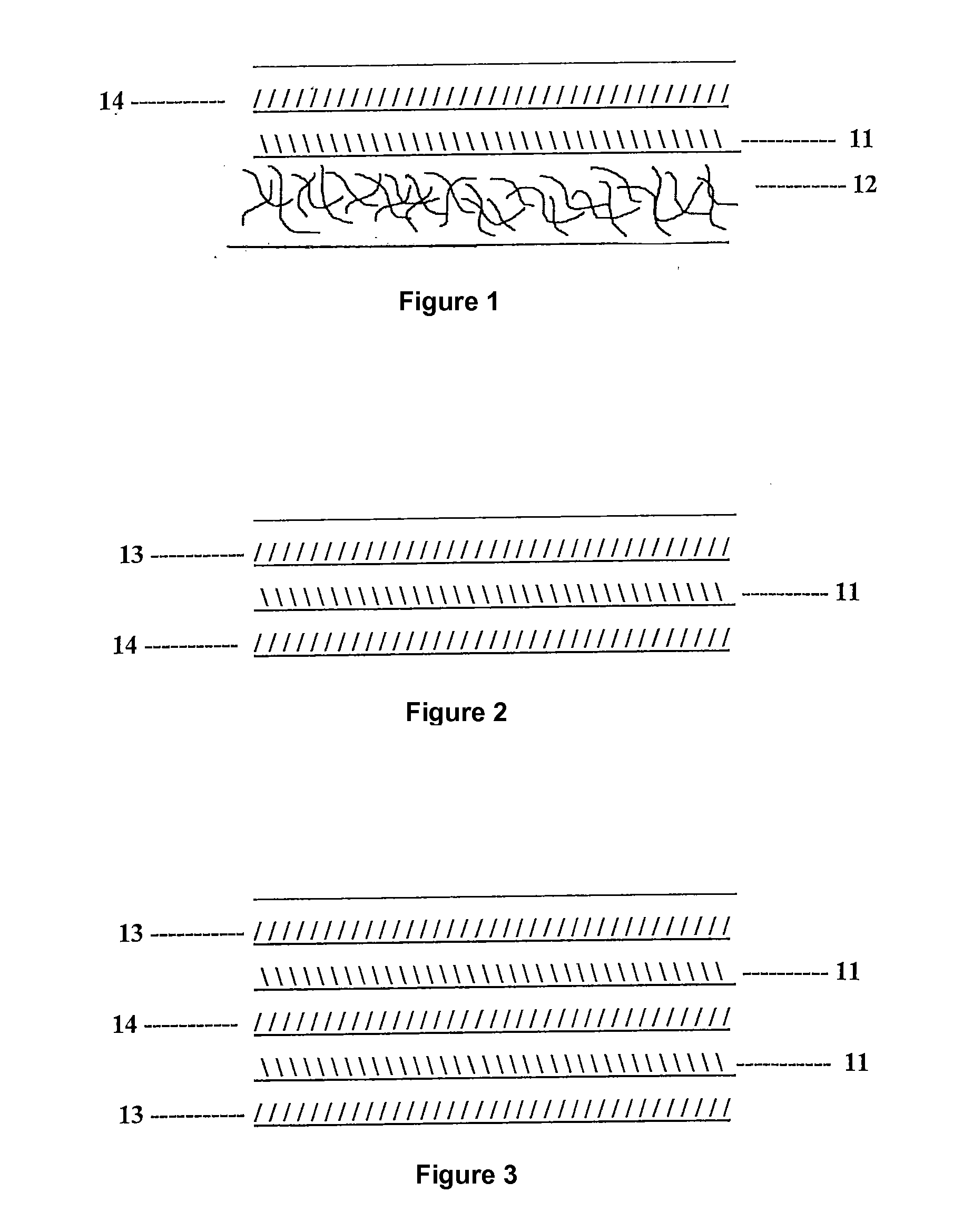Selectively permeable chemical protective films and composite fabrics
a chemical protective film, selectively permeable technology, applied in the direction of straight-bar knitting machine, synthetic resin layered product, vehicle safety arrangement, etc., can solve the problems of high cost and risk of reuse decontamination, and achieve the effect of reducing heat stress and prolonging work cycles
- Summary
- Abstract
- Description
- Claims
- Application Information
AI Technical Summary
Benefits of technology
Problems solved by technology
Method used
Image
Examples
example 1
[0091]A basic structure was prepared as described in FIG. 1. The moisture vapor permeable chemical resistant film layer 14 is comprised of a layer of regenerated cellulose commonly referred to as cellophane. The film is sold by Innovia Films under the designation NatureFlex 80P. Discontinuous adhesive layer 11 was applied using a gravure roller and pressure sensitive hot melt adhesive. Fabric layer 12 is a 2 oz / yd2 spunbonded polypropylene. Test results for example 1 are summarized in Table 1.
example 2
[0092]A sample film composite was prepared as described in FIG. 3. The vapor permeable, liquid impermeable layers 13 consisted of microporous polypropylene films. The film is available from RKW Industries under the designation Aptra AP3. This film was adhesively laminated to semi-permeable layer 14 by means of discontinuous adhesive layers 11. Layer 14 consists of a cellophane film available from Innovia Films designated as Natureflex 80NP. Results for physical and chemical testing are shown in Table 2.
example 3
[0093]A sample fabric was prepared as generally described in FIG. 4. A vapor permeable, liquid impermeable layer 13 is a sheet of microporous Aptra AP3. The AP3 was laminated by means of a discontinuous adhesive layer 11 to a semi-permeable layer 14 that is comprised of 0.89 mil Natureflex 80NP cellophane. The microporous film side (layer 13a) of an incrementally stretched microporous coated spunbonded polypropylene nonwoven fabric composite (available from Clopay Plastic Products) was laminated to the opposite side of the semi-permeable layer 14 by means of discontinuous adhesive layer 11. The Aptra side of the final composite was exposed to the test chemicals. Results for physical and chemical testing are shown in Table 3.
PUM
| Property | Measurement | Unit |
|---|---|---|
| Mass | aaaaa | aaaaa |
| Density | aaaaa | aaaaa |
| Permeability | aaaaa | aaaaa |
Abstract
Description
Claims
Application Information
 Login to View More
Login to View More - R&D
- Intellectual Property
- Life Sciences
- Materials
- Tech Scout
- Unparalleled Data Quality
- Higher Quality Content
- 60% Fewer Hallucinations
Browse by: Latest US Patents, China's latest patents, Technical Efficacy Thesaurus, Application Domain, Technology Topic, Popular Technical Reports.
© 2025 PatSnap. All rights reserved.Legal|Privacy policy|Modern Slavery Act Transparency Statement|Sitemap|About US| Contact US: help@patsnap.com



